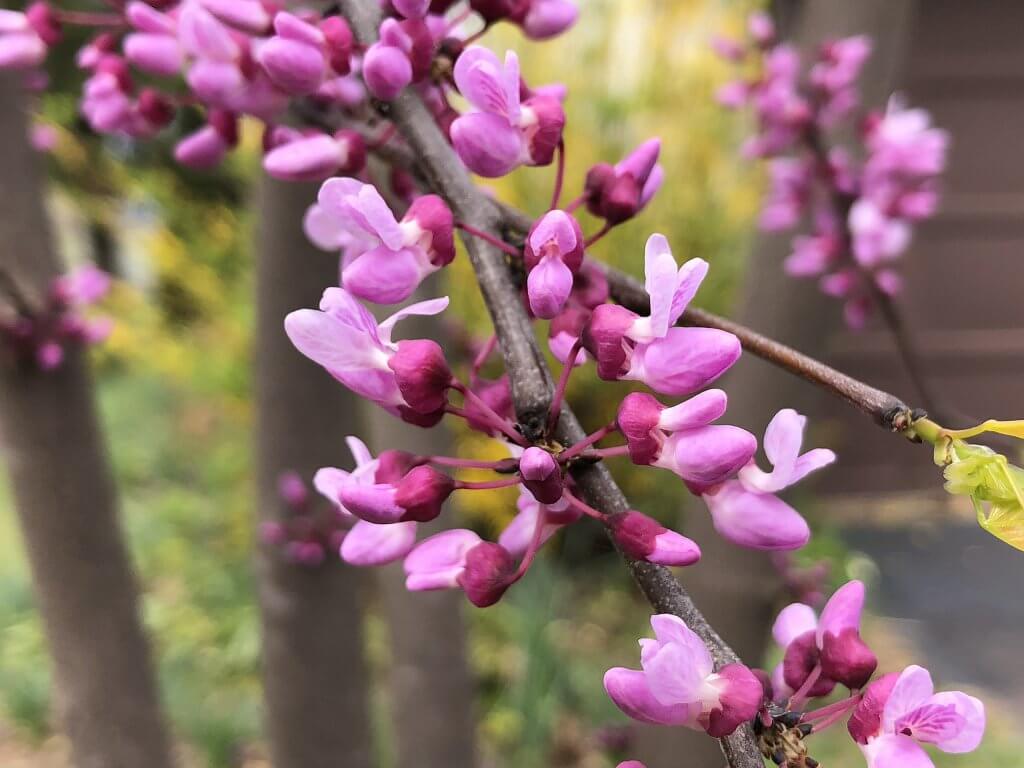How To Grow And Care For A Redbud Tree Plant
Have you ever seen a beautiful tree with bold, vibrant flowers and wondered if you could eat them? Meet the Eastern Redbud! This stunning tree has not only aesthetic appeal, but also some delicious edible flowers to offer. In this article, we will explore everything you need to know about this highly versatile tree, including its plant attributes, plant care, pruning, propagation, potting & repotting, common pests & plant disease, and common problems.

Plant Attributes
The Eastern Redbud is a small to medium-sized tree that can grow up to 20 to 30 feet tall with a 25 to 35 feet spread. It's a slow-growing tree, which makes it a long-lasting addition to your garden. The tree is easy to recognize because of its large, heart-shaped leaves that grow 3 to 6 inches long and wide. The Eastern Redbud is known for its pink to reddish-purple flowers that bloom in early spring before its leaves appear. These beautiful flowers are edible, have a sweet and savory flavor, and are rich in vitamin C.
Additionally, the tree's leaves turn yellow in fall, adding to its aesthetic value. What's more, Eastern Redbuds are extremely hardy, thriving in USDA zones 4 to 9.
Plant Care
The establishment of an Eastern Redbud tree begins with selecting a great location, preferably one that receives full sun or light shade. The tree adapts well to different soil types, including rocky, sandy, and clay soils, but requires well-drained soils. As such, it's important to water the tree regularly to ensure the soil doesn't dry out.
The tree will need extra watering during the hot summer months, but always avoid getting its foliage wet. What's more, applying a layer of mulch around the base of the tree helps retain moisture, suppress weed growth, and maintain the soil's temperature.
Pruning
Pruning is an essential practice that helps maintain the tree's shape, remove dead branches, and promote growth. The best time to prune the Eastern Redbud is in early spring after its flowers fade. This is because it brings its branches a more festive look, encouraging more growth and providing much-needed protection against diseases and pests.
To prune, first, remove any dead, diseased, or damaged branches. Next, trim any crossing or rubbing branches. Finally, trim the tree's canopy to encourage new growth, but be careful not to cut too harshly into the tree's bark. Cutting too deeply can cause permanent damage to the trees.
Propagation
Eastern Redbuds can be propagated through two means: through seed or cuttings.
Propagating through seed involves collecting as many viable seeds as possible from the tree during its flowering period. Fresh of the Eastern Redbud seeds germinated quickly; however, older seeds need a stratification period. You can place these seeds in a container with damp sand mixed with red sand, which will help mimic natural outdoor temperatures.
The cuttings method involves taking cuttings from the tree's softwood in the summer or hardwood in the fall. Remove any leaves from the cutting, dip it in rooting hormone and place it into well-drained soil.
Potting & Repotting
Although Eastern Redbuds are commonly planted outdoors, you may want to keep one indoors as a bonsai tree. When potted, the tree requires well-drained soil and frequent watering.
Repotting should be done every two to three years, and the best time to do this is in early spring before its active growth period. To repot, gently remove the soil from the pot and prune any damaged or rotting roots. Next, add fresh soil to the new pot, making sure the tree's graft union is slightly elevated above the soil line.
Commons Pests & Plant Disease
Like any plant, Eastern Redbuds are vulnerable to pests and diseases. The common Eastern Redbud diseases include anthracnose, which causes leaf spots and defoliation, and verticillium wilt, which is a soil-borne disease that causes leaves to wilt and die.
The common Eastern Redbud pests include caterpillars, which can strip the tree of its foliage, and Japanese beetles, which can eat the tree's foliage and flowers. To prevent these pests and diseases, ensure the tree is planted in a well-drained soil and watered regularly to prevent drought stress.
Common Problems
As with any tree, there are some common problems that Eastern Redbuds can experience. One of the most common is root rot, which can cause the tree's leaves to wilt, turn yellow or brown, and eventually fall off. This problem is caused by over-watering, and as such, it's important to ensure the plant is not sitting in water by providing proper drainage.
The tree can also be affected by dehydrated leaves, stem cankers, or insects. To prevent these problems, make sure the tree is watered regularly and is planted in the right spot.
Indeed, Eastern Redbud trees are stunning, hardy plants that can transform your garden. With proper care, you can enjoy not only the tree's vibrant pink flowers but also their sweet, delicate flavor. Consider bringing one of these trees into your garden and experiencing the joy of nature's beauty.




Post a Comment for "How To Grow And Care For A Redbud Tree Plant"